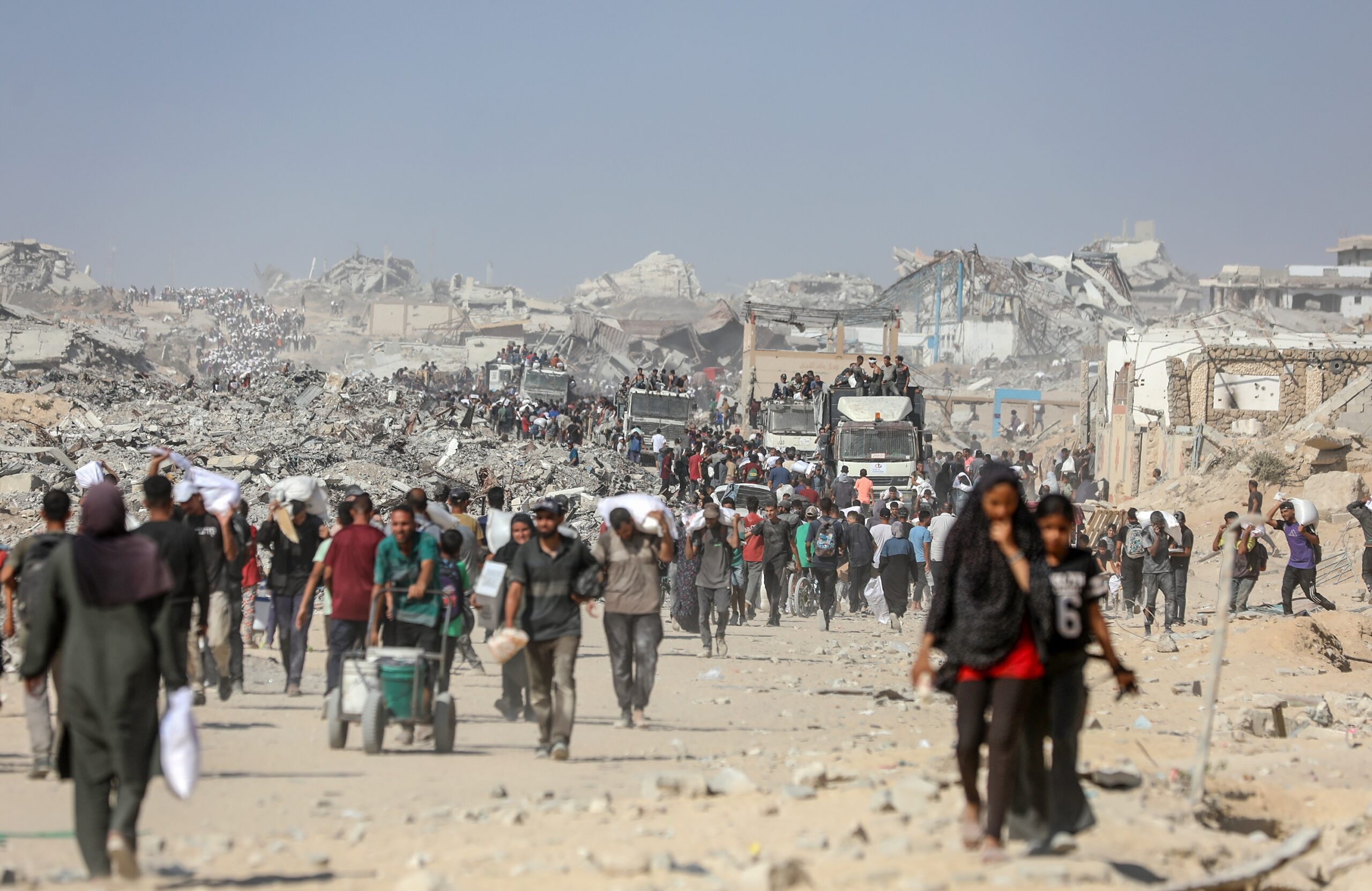There are few states where a person or community’s right to exist within a state’s territorial boundaries hinges on religious beliefs. In today’s India, minorities are increasingly forced to chant “Jai Shri Ram” or face violent consequences.
Samuel Huntington’s ideas may have seemed far-fetched to some in 1992 when he predicted future wars to be “not between countries, but between cultures.” Religion is a key factor in the cultural identity, and religious identity has become a powerful political force in state affairs and has sparked numerous identity-based interstate and intrastate conflicts throughout history. The resurgence of the commingling of politics and religion has had serious consequences in several countries and signals a shift towards a muscular majoritarian religiously inspired nationalist movements. We have recently witnessed the phenomena of religious nationalism in the Rohingya genocide, which is a series of persecutions of Muslims by the Myanmar military. Due to their distinct religious identity, over a million Rohingya people have been forced to escape their homeland and seek refuge in other countries. Similarly, in today’s “shining” India—the world’s “largest democracy”—inter-communal clashes over religion continue.
In recent history, a genocide perpetrated against minorities in India has been overshadowed by crimes against humanity elsewhere in the world. The major global powers appear to ignore the violence in India against minorities because of their strategic interests in the region and more importantly, India’s significant economic potential. Political violence in Kashmir, Assam, Gujarat, Arunachal Pradesh, Assam, Manipur, Meghalaya, Mizoram, Nagaland, Tripura, and Sikkim illustrates the state’s worst repressive approaches towards minorities. The introduction of India’s New Citizenship Policy is blatant discrimination against the 172 million Muslims who constitute almost 14.6 percent of the population. Other minorities such as Sikhs, Christians, Buddhists, people from the scheduled castes – the lowest, including Dalits – and Adivasis – the Indigenous people of India – also live under constant fear.
India, Minorities, and RSS
The dramatic rise of religious nationalism in India is buttressed the right-wing extremist Rashtriya Swayamsevak Sangh (RSS) Hindu nationalist movement. RSS, which literally means “national volunteer organization,” was founded on 27 September 1925 in Nagpur, India during the Hindu renaissance. The sevaks or volunteers of RSS aim to transform social, cultural, educational, labour, developmental, and political structures into their version of Hinduism. The founding members of RSS were besotted with Benito Mussolini’s fascist ideology and aimed to implement his same approach to eliminate religious minorities in India. RSS has abandoned the Indian national tricolour in favour of the saffron flag, known as bhagwa dhwaj. Saffron colour has become linked to RSS identity, and RSS sevaks revere the saffron flag. According to RSS ideology, all religions in India other than Hinduism are considered foreign religions, and their adherents should either leave the country or convert to Hinduism in order to achieve the Hindu renaissance.
The ruling Bhartiya Janata Party (BJP) acts as a political interface of RSS, which is allegedly “remaking the nation into one where some people count as more Indian than others.” As a result, violence against minorities is often referred to as state-sponsored terrorism. It is no coincidence that the persecution of minorities has increased since Narendra Modi’s ascension to the position of prime minister. Modi has been an RSS sevak and believes in the execution of Hindutva ideology – a belief that India should become an “only Hindu state.” It was Modi who allowed the Gujarat Pogrom in 2002 while he was chief minister, for which he was declared persona non grata in America and many European countries for many years until he became prime minister.
Under state patronage, saffron terror groups have become part of mainstream politics and influence national policy matters. These groups have revived Hindutva ideology in a systematic and brutal manner which has terrified India’s minorities, particularly Muslims and Christians. Advocates of Hindutva refer to themselves as Sangh Parivar, where Sangh refers to the movement and Parivar corresponds to the family. The Hindu nationalist organisations affiliated with RSS ideology identify with Sangh Parivar, including political parties like the BJP and militant religious organisations like Bajrang Dal. In today’s India, RSS sevaks regularly carry metal rods, cricket bats, and rocks to attack people in minority communities in the name of Hindutva or saffron terror.
Shining India under Saffron Terror
When minorities, particularly Muslims, are assaulted by saffron terrorists, they are often forced to recite “Jai Shri Ram,” a slogan raised for the glorification of Hindu lord Rama, or else are offered a life-or-death choice: to accept Hinduism as their religion or be killed. Such situations occur throughout India, whether in Assam’s Barpeta District or Mumbai’s crowded streets. The horrifying images of a photojournalist trampling the body of a Muslim man who had been killed by state police illustrate the state-sponsored brutality.
Even places of worship are not safe in today’s India. Many mosques, like Ayodhya which was constructed in the Mughal era, have been converted into temples. RSS militants have demolished churches or set them on fire. Union of Catholic Asian News reported that another church in Uttarakhand state was attacked by a mob of 200 radical Hindu nationalists on 10 September 2021. Even more worrisome is that this hatred transcends Indian borders. According to Amar Singh, president of Turbans 4 Australia, the whole Sikh community is concerned about increasing attacks by Hindu nationalists in Australian cities.
There are a few voices, like that of Arundhati Roy, who resist RSS fascist ideology, but the political effectiveness of Hindutva ideology has been imbued in the Indian constitution, thus leaving little space to counter RSS fascism. India has survived many challenges and serious crises since 1947. However, the rise of saffron terror and the renewed onslaught on minorities, if not checked, will prove to be far more devastating to the sovereignty of world’s largest democracy.
Dr Seema Khan has worked extensively with the government of Pakistan since 1999 and completed different tiers of academic education from three leading Australian Universities—Monash, The University of Melbourne, and Deakin. Seema holds a PhD from Deakin University in International Relations, and core areas of interests are power politics and strategic studies. Twitter: @seemashafiq71
This article is published under a Creative Commons License and may be republished with attribution.




